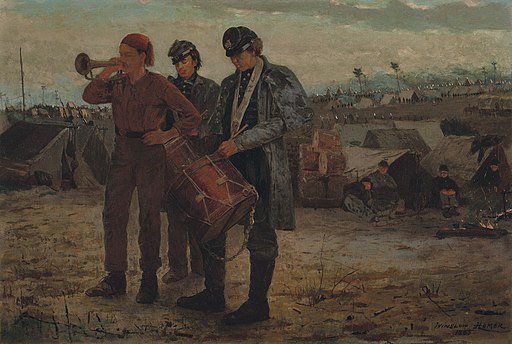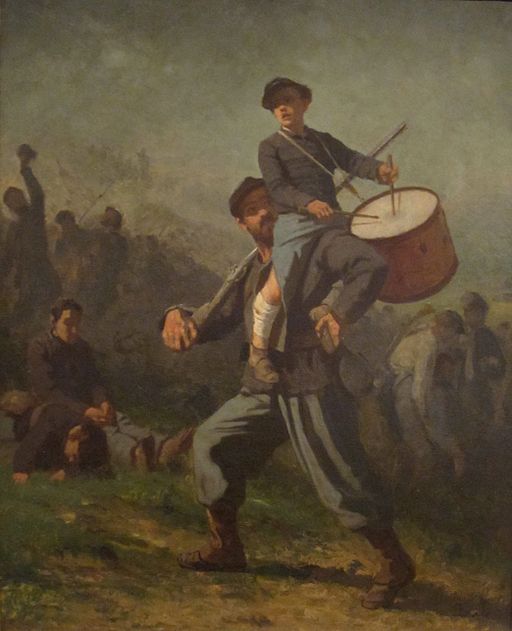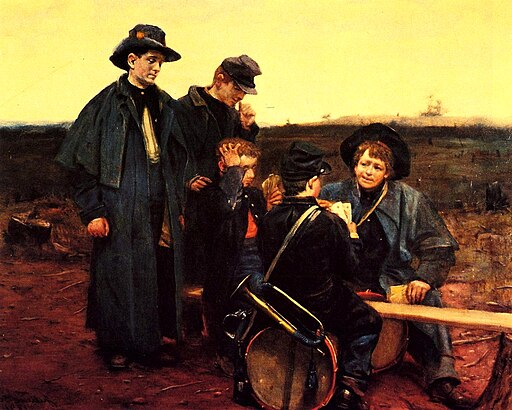Civil War Art: Drummer Boys
Combing through some collections of Civil War art online, several paintings of drummer boys offered a chance to reflect on the changing societal attitudes toward children in the 19th Century and how young boys became symbols in the war’s propaganda and memory. These visuals provide some interesting examples, and while there are other pieces of art including young musicians, this sampling gives an opportunity to explore some ideas.

Various poets, song writers, and artists used drummer boys to evoke their cause in the war. A brave, very young lad determined to do his part. The more pathos the better by mid-19th Century standards, so the ideal of a drummer boy volunteering out of patriotism, staying at his musician’s post during battle, and then being grievously wounded (or dying) created a tale that could inspire. Certainly some real drummer boys had these fictionally-preferred experiences, but for many, military service became the less glamorous “Sounding Reveille”, like artist Winslow Homer envisioned.

The 19th Century saw shifts in the attitude toward childhood and adolescence. That period of youth expanded from previous generations, idealizing more time for children to be children. Young teens had been involved in all of the United States’ wars up to that time, but now the drummer boys and musicians became an enduring symbol of youth fighting for cause during the war…not just in the afteryears when they sometimes outlived other war veterans.

Were they boys? Soldiers? Not civilians, if they were in uniform. Though they might take a role as noncombatants and care for the wounded if they put down their instruments. In many ways, Civil War drummer boys walked in blurred lines between child or teen in years but a man’s experiences of war. Military and yet not typically active in the “shooting war.”
Artist Julian Scott captured both some of these tensions and the irrepressible spirit of youth in one of his paintings. In their oversized coats a group of musicians attempts to play cards. The expressions are childlike, the uniforms soldierlike. Here, art helps to visual the realities of young volunteers and their mixed eagerness for war, mischief, and fun.
I do think most of the drummer boys would have thought of themselves as regular soldiers to a fair extent, even without carrying a gun, especially considering their roll in relaying orders in the field. That said, the eagerness to go to war and willingness to do so with no recourse for self defense raises an interesting question of at what age a person can really knowingly go forth to battle? And for someone who has never faced battle, is there really any age where they can know what they’re getting into?
I like Julian Scott’s painting the best, perhaps because of the absence of heroism.
2 years ago, the Metropolitan Museum of Art in NYC, had an exhibit of Winslow Homer paintings.